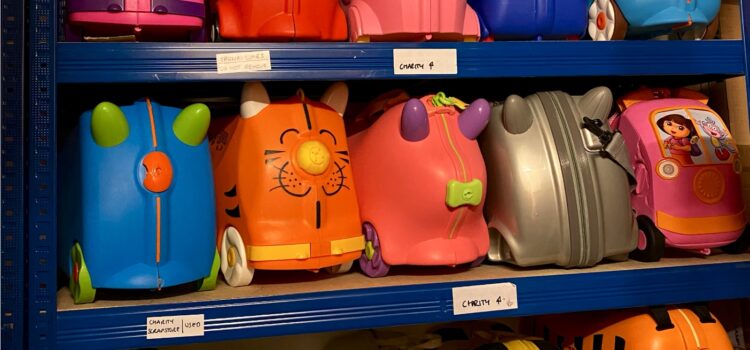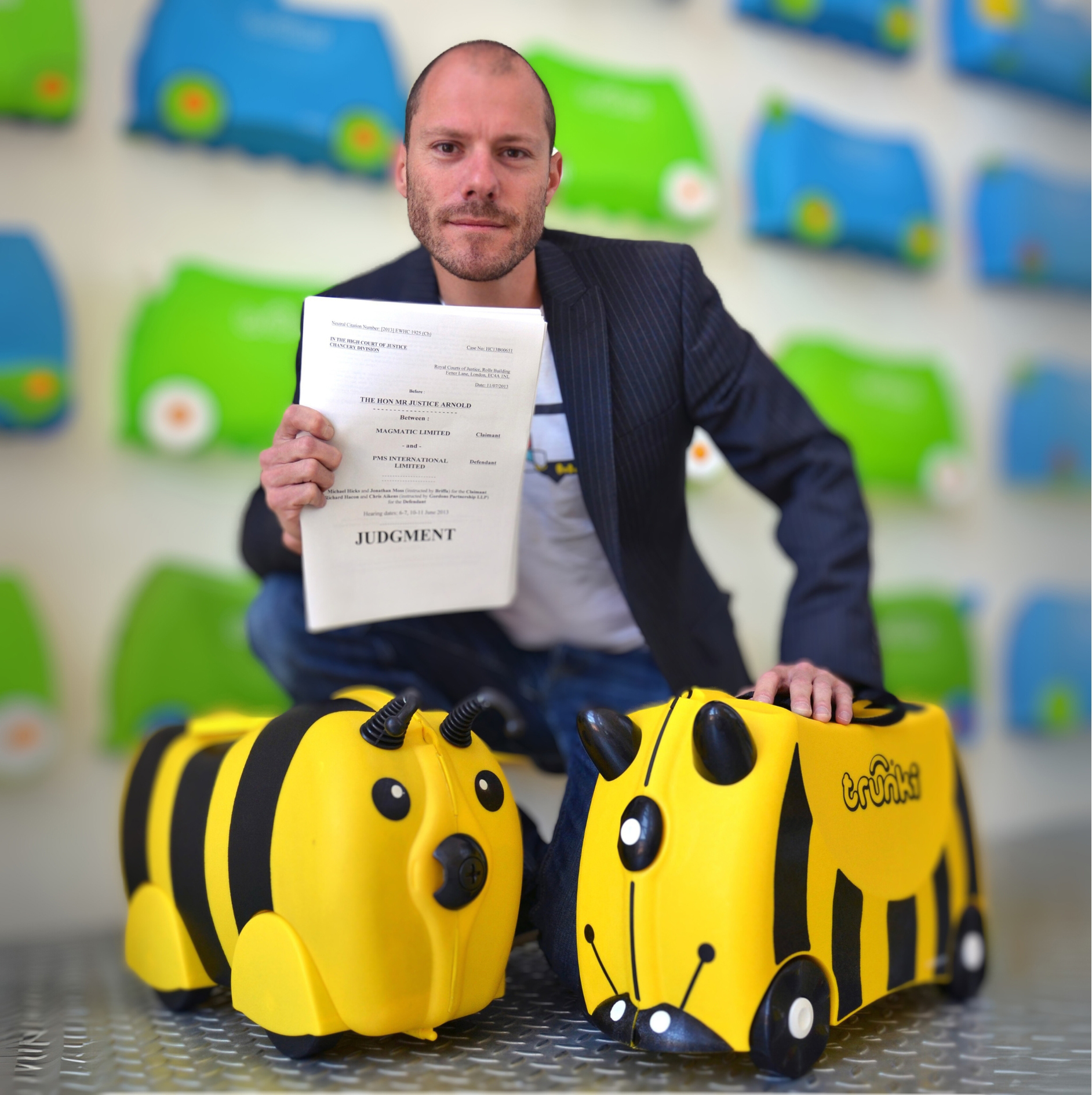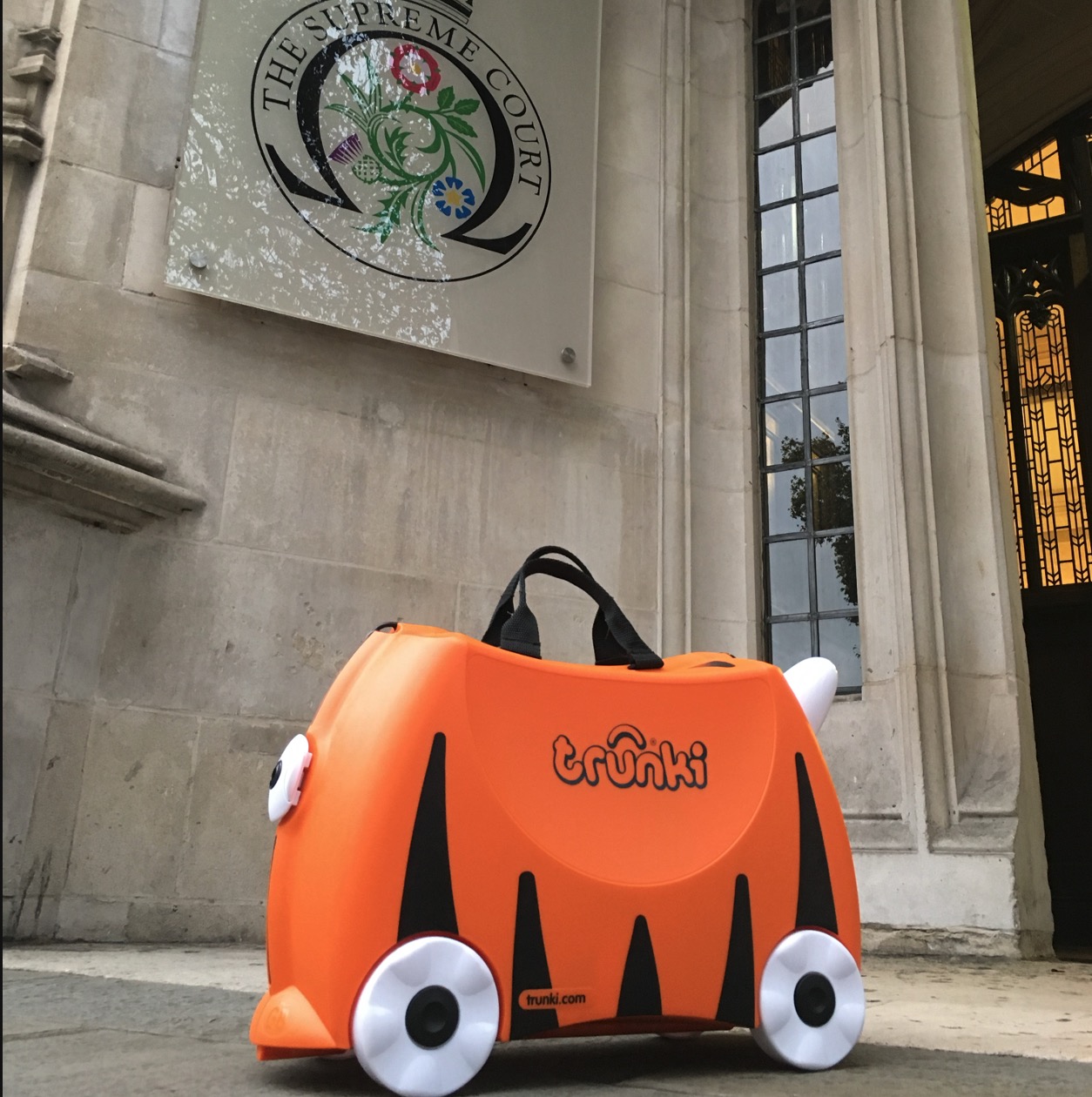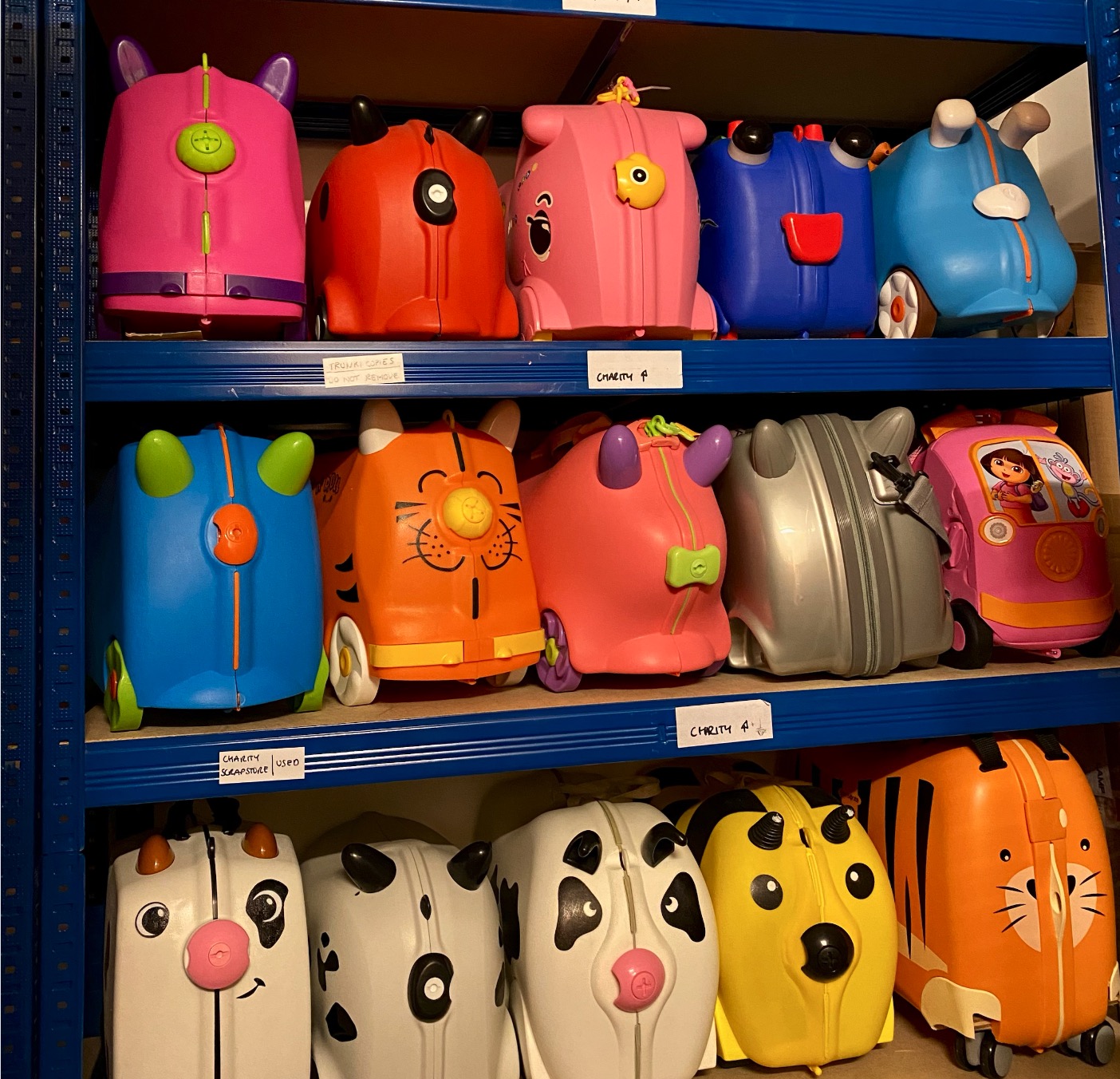
But You Can Choose Where to Focus Your Energy
When I first launched Trunki, my goal was simple. I just wanted to see it on the shelves.
It was a tiny idea I’d nurtured for years. A colourful ride-on suitcase that made travel more fun for kids and a little easier for parents. That was it. No grand ambitions. Just the hope that I could get this playful invention out into the world.
But then we hit £1 million turnover. That milestone changed everything. Suddenly, I started thinking bigger. I wanted to scale the business. Build something that could last. Create a global brand.
And with that success came copycats.
The first knock-off I saw was almost laughable. It came out of Asia, looked like a handbag, and barely functioned as a ride-on. But then more started to appear. Some were near-identical in shape and colour. It wasn’t just flattery anymore. It was a threat.
Thankfully, I had a European design registration in place. It protected the shape and overall impression of the product. So we fought back. We stopped the obvious copies at trade shows. Sent out cease-and-desist letters. Took swift, confident action.
Then came the UK-based copycat. A company known for imitating successful British brands. This time, it felt personal.

My lawyers told me we had a strong case, but warned it might go all the way through the courts. I didn’t hesitate. We pressed forward.
We took the case to the High Court. I stood in the witness box, laid out the original sketches, walked them through the evolution of the design. And we won.
But then they appealed.
And just as my first child was born, while I was at home on paternity leave, I got the call. We’d lost.
Not because they hadn’t copied us. But because of how the greyscale CAD rendering I’d filed back in 2003 was interpreted. The issue wasn’t about the originality of our product. It was about a technicality in how lines and shading are viewed under design law.
The ruling hit hard. Design law is supposed to offer certainty. But in our case, it turned out to be quite literally grey.
We were ordered to pay their legal fees and damages for lost sales during the injunction. I was exhausted. A brand-new father. Running a business. Gutted. Broke. Sleep-deprived and emotionally floored.
But here’s what I came to realise: I couldn’t control the court’s decision. What I could control was the narrative.
So we told our story. We went to the press and spoke up for design, creativity and originality. Not just for Trunki, but for every small British brand fighting to protect their ideas. To our surprise, it struck a chord.
We were featured across national media. Then we launched a PR campaign, supported by celebrity designers and backed by people who understood how important this fight was to the creative industries.
It wasn’t just about us anymore.
We took it to the Supreme Court. One last push. One final hope.

It was surreal. Brightly coloured Trunkis lined up in the UK’s highest court as senior judges debated how to interpret European design law. I sat there, watching it unfold, and just hoped they’d see what was at stake.
But we lost. Again.
And then something strange happened.
That same year, we had our best-ever UK sales.
We lost in court. But we won in the marketplace.
We won hearts. Minds. Customers.
And that’s the part I’ll never forget.
So if you’re up against it right now, whether you’re fighting off competitors, dealing with a crisis, or just trying to survive, here’s what I’ve learnt.
You don’t need to win every battle.
You just need to choose where your energy is best spent.
Own your story. Focus on what you can control. Put your energy into building.
And you might just come out stronger than ever.





